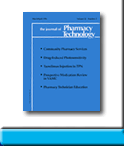 |
 |
SIMVASTATIN AND
RHABDOMYOLYSIS — A CASE REPORT AND BRIEF REVIEW
Ashish Pershad and Frank P Cardello
To request full article click here.
OBJECTIVE: To report an unusual case of simvastatin-induced rhabdomyolysis and to discuss the occurrence of this potentially fatal adverse effect.
CASE SUMMARY: A 61-year-old white man was admitted to the hospital with angina and myalgia. Laboratory data obtained on admission confirmed the clinical diagnosis of simvastatin-induced rhabdomyolysis. The medication was discontinued, and the patient's rhabdomyolysis resolved. Three months later, a rechallenge with simvastatin resulted in the recurrence of myalgia and elevation of the creatine kinase concentration. Discontinuation of the medication resulted in improvement of symptoms and return of the creatine kinase concentration to within normal limits.
DISCUSSION: Although simvastatin-induced rhabdomyolysis is a well-described entity, the occurrence of rhabdomyolysis at the lowest prescribed dose in the absence of concomitant interacting drugs is rare. The mechanism of this adverse effect is postulated to be related to mitochondrial dysfunction due to a relative deficiency of skeletal muscle Co Q10 induced by the drug.
CONCLUSIONS: Simvastatin, even at the lowest prescribed dose and in the absence of drugs known to interact adversely with it, can cause potentially life-threatening rhabdomyolysis. This case report shows that cautioning all patients about this rare yet serious adverse effect is critical.
J Pharm Technol 1999;15:88-9.
To request full article click here.
|
|
|
||
|

